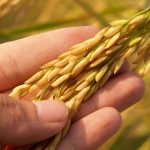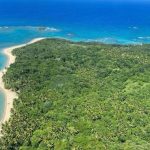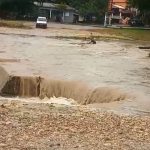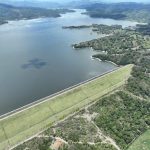The country’s natural beauty: a vast array

Dominican Republic (PRNewswire).- Home to nine differentecozones, Dominican Republic’s natural contrasts provide a bevy of breathtakingnature for visitors to explore. The country’s natural diversity and varyingclimates create the perfect eco-playground for all nature enthusiasts.
"Dominican Republic’s natural features extend farbeyond the beaches we are best known for," said Magaly Toribio, marketingadvisor for the Dominican Republic Ministry of Tourism. "From lush greenjungle to arid semi-deserts to pine-covered mountains, our country truly doeshave it all."
A land of striking contrasts, the country is home to boththe lowest and highest points below and above sea level in the Caribbean. LakeEnriquillo is a scientific marvel situated in a rift valley. This saltwaterlake is both the largest lake and the lowest elevation in the region, at 45yards (42 meters) below sea level. The lake is a designated Ramsar Site and isbest explored by boat, allowing visitors to take in the spectacular sight ofthe wildlife refuge featuring tropical birds, flamingos, two types of iguanaand American crocodiles.
To the northeast of Lake Enriquillo stands Pico Duarte, thehighest peak in the Caribbean at two miles (3,087 meters) above sea level. Thepeak is accessible by two- to four-day treks from nearby Jarabacoa, allowingtravelers to take in magnificent panoramic views once they arrive to the top.In Jarabacoa, visitors can also enjoy a cool mountain climate that provides awelcome reprieve from warmer conditions in other parts of the country. Bycontrast, the sand dunes in Baní—about an hour from the capital of SantoDomingo—offer a desert-like atmosphere, spanning over 9 miles (15 km) andreaching heights up to 115 feet (35 meters). Tourists can explore the dunes byfoot, but good shoes are recommended, as the sand can be hot.
For even more stunning bird’s-eye views, a cable carjourney to the top of Mount Isabel de Torres in Puerto Plata is a can’t-miss. Amassive statue of Christ and a botanical garden also await visitors at the topof the peak.
Dominican Republic is home to another extreme: the shortestriver in the Antilles. Los Patos River in Barahona, named for its largepopulations of ducks, is the shortest river in the region and one of theshortest in the world. By contrast, the Yaque Del Norte River is the longestriver in the country, winding from Jarabacoa up to the far northwest corner ofthe country in Montecristi.
For a comprehensive showcase of Dominican Republic’snatural diversity, look no further than the national parks. The lush LosHaitises National Park in Samaná features mangroves that can be explored byboat and ancient pictographs from the Taino Indians preserved in caves. On theopposite end of the country, Jaragua National Park in Pedernales ischaracterized by dry forest and scrub. Jaragua is the largest protected area inthe Caribbean and is home to several ecosystems including natural forests,wetlands and coral reefs.
In the center of the country, Valle Nuevo National park inConstanza offers spectacular bird watching and mountain trekking, along withcool temperatures and pine tree forest—perfect for camping. The park features avast array of elevations and a diverse assortment of plants and animals, with531 plant species and 145 wildlife species.
In the northwest corner of the country, MontecristiNational Park’s dry, subtropical forest landscape is surrounded by mangrovesthat can be explored up close by boat or on foot through a network of inlandwaterways. Visitors can also explore a cluster of small islands within the parkand take advantage of the coral reefs for snorkeling.
Montecristi National Park features three categories ofprotected areas, offering an assortment of unique natural wonders within thepark. ?

















